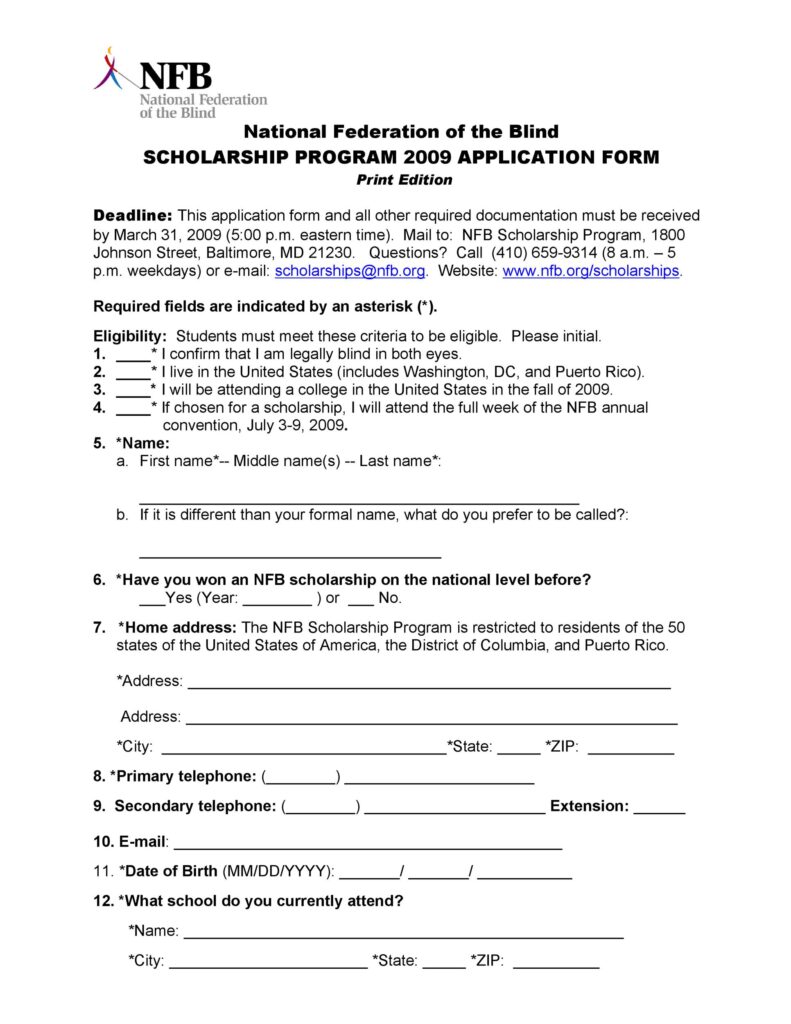My Scholarship Journey: From Dream to Reality – A Beginner’s Guide to Applying for Scholarships (and Actually Getting Them!)
Hey there, future scholar! If you’re reading this, chances are you’re dreaming big. Maybe it’s studying abroad, getting into that dream university, or simply easing the financial burden of higher education. Trust me, I’ve been exactly where you are. I remember staring at tuition fees, feeling my heart sink, thinking my academic dreams might just remain dreams. But then, I discovered the magic word: Scholarships.
This isn’t just an article; it’s my story. It’s about how I, a complete beginner with no idea where to start, navigated the seemingly daunting world of scholarships apply and eventually landed the financial aid that made my education possible. So, grab a cup of coffee, settle in, and let me walk you through the journey, step by step. I promise to keep it real, simple, and full of tips I wish I knew when I started.
Chapter 1: The Awakening – Realizing Scholarships Are Your Friend
My journey began with a terrifying realization: university is expensive. Like, really expensive. I was passionate about my chosen field, but the numbers on the university websites looked like phone numbers for a different planet. That’s when a kind mentor mentioned scholarships.
"Scholarships?" I thought. "Aren’t those for super-geniuses or Olympic athletes?"
Turns out, I was wrong. Completely wrong. Scholarships are not just for the academic elite or the incredibly talented. They are for anyone who meets specific criteria, and those criteria vary wildly. Some are based on merit (grades), some on financial need, some on your extracurricular activities, your major, your background, your hobbies, even your last name!
The first, and most crucial, step in my journey was a mental shift: Don’t let the cost stop you. There’s money out there for your education, you just need to find it and apply for it. This mindset change was everything. It transformed a feeling of hopelessness into one of hopeful determination.
Chapter 2: The Grand Hunt – Finding the Right Scholarships for You
This was probably the most overwhelming part initially. It felt like looking for a needle in a haystack. But with a systematic approach, it became much easier. Here’s how I tackled the scholarship search:
-
Start Early, Seriously Early!
I cannot stress this enough. Many scholarship application deadlines are months, sometimes even a year, before the academic year begins. The earlier you start, the more opportunities you’ll find, and the more time you’ll have to craft a compelling application. My advice? As soon as you even think about higher education, start looking for scholarships. -
Online Scholarship Databases are Your Best Friends
I spent hours on websites specifically designed to connect students with scholarships. Think of them as giant search engines for money! They let you filter by your major, GPA, location, background, and more.- Examples: While I can’t provide live links here, do a quick Google search for "free scholarship search engines" or "online scholarship databases." You’ll find many popular ones.
- Tip: Create a dedicated email address just for scholarship applications to keep things organized and avoid spam in your main inbox.
-
Check University Websites Religiously
Most universities offer their own scholarships, sometimes exclusively for their admitted students. These are often less competitive because only students applying to that specific university can get them. Always check the "Financial Aid" or "Scholarships" section of any university you’re interested in. -
Explore Local Opportunities
Don’t overlook your own backyard! Local community organizations, businesses, churches, and alumni associations often offer scholarships to students from their area. These can be less competitive simply because fewer people know about them. Check with your high school counseling office, local library, or community centers. -
Think Outside the Box
Are you left-handed? Do you love playing video games? Is your parent a veteran? There are scholarships for almost everything! Be creative with your search terms. Don’t limit yourself to just "academic scholarships."
My takeaway from this phase: Patience and persistence are key. It’s a numbers game. The more scholarships you identify as potentially fitting your eligibility criteria, the higher your chances of success.
Chapter 3: The Preparation Pit Stop – Gathering Your Arsenal
Once I had a list of potential scholarships, I realized each one had its own set of requirements. This was probably the most crucial stage, where meticulous organization became my superpower. To nail your scholarship application, you’ll likely need:
-
Academic Transcripts:
This is your official record of grades. Make sure you know how to request them from your school and allow enough time for processing. Some scholarships might ask for unofficial copies initially, but always be ready with official ones. -
Standardized Test Scores (if applicable):
SAT, ACT, IELTS, TOEFL, etc. If the scholarship requires them, make sure your scores are up-to-date and sent directly from the testing agency if requested. -
Resume/Curriculum Vitae (CV):
This is your chance to highlight your achievements beyond academics. Include:- Work experience: Even part-time jobs or volunteering.
- Extracurricular activities: Clubs, sports, arts, community service.
- Leadership roles: Any time you’ve taken initiative or led a group.
- Awards and Honors: Academic, athletic, or community recognition.
- Tip: Tailor your resume slightly for each scholarship, emphasizing experiences relevant to their criteria.
-
Letters of Recommendation:
These are crucial! A glowing letter from a teacher, counselor, employer, or mentor can significantly boost your application.- Who to ask: Choose people who know you well, can speak positively about your character, work ethic, and potential.
- How to ask: Ask politely and well in advance (at least 2-3 weeks before the application deadline). Provide them with your resume, the scholarship requirements, and why you’re applying. Make it easy for them!
- Tip: Follow up gently, and always send a thank-you note, regardless of the outcome.
-
The Personal Statement/Scholarship Essay:
Ah, the heart of the application! This is where you truly shine and tell your story. We’ll dive deeper into this in the next chapter because it’s that important.
My takeaway from this phase: Create a checklist for each scholarship. Keep all documents in a dedicated folder (digital and physical). Being organized saves immense stress!
Chapter 4: Crafting Your Story – The Heart of Your Application
This is where I learned that getting a scholarship isn’t just about good grades; it’s about telling a compelling story. The scholarship essay or personal statement is your chance to connect with the selection committee on a personal level.
Here are my top tips for writing a winning essay:
-
Understand the Prompt:
Read the essay question carefully. What are they really asking? Don’t just answer; address the underlying values or skills they’re looking for (e.g., leadership, resilience, problem-solving). -
Be Authentic and Personal:
Don’t try to be someone you’re not. Share a genuine experience, a challenge you overcame, a passion that drives you. Use "I" statements and let your unique voice shine through. My own essay was about how my love for reading led me to pursue a specific major, linking it to a personal anecdote from my childhood. -
Show, Don’t Just Tell:
Instead of saying "I am a leader," describe a situation where you demonstrated leadership. Instead of "I am passionate about science," talk about a specific experiment or project that ignited your curiosity. Use vivid language and concrete examples. -
Structure Your Essay:
Like any good story, your essay needs a beginning, middle, and end.- Introduction: Hook the reader immediately.
- Body Paragraphs: Develop your ideas with examples and reflections.
- Conclusion: Summarize your main points and reiterate why you deserve the scholarship, linking it back to your future goals.
-
Proofread, Proofread, Proofread!
A single typo can undermine your credibility. Read your essay aloud to catch awkward phrasing. Ask a trusted friend, teacher, or mentor to review it for grammar, spelling, clarity, and overall impact. Don’t rely solely on spell check!
My takeaway from this phase: Your essay is your voice. It’s your opportunity to show the committee who you are beyond the numbers. Invest time and effort here.
Chapter 5: The Finishing Touches – Submitting with Confidence
After all that hard work, the final step is submission. This might seem simple, but there are still crucial things to remember:
-
Review Everything Thoroughly:
Before hitting that submit button, double-check every single field. Are all documents attached? Are there any missing pieces? Is your contact information correct? -
Meet the Deadline – Or Better, Beat It!
The application deadline is non-negotiable. Submitting even one minute late can disqualify you. I always aimed to submit at least a day or two before the deadline to avoid any last-minute technical glitches. -
Keep Copies:
Save copies of everything you submit – your essays, your resume, the application form itself. This can be helpful for future applications or if there are any questions.
My takeaway from this phase: Don’t rush the final step. A careful review can prevent silly mistakes that might cost you the scholarship.
Chapter 6: The Waiting Game (and What Comes Next)
I won’t lie, there were rejections. Many of them. For every "Congratulations!" email, there were ten "We regret to inform you…" messages. This is perhaps the hardest part of the scholarships apply journey.
-
Don’t Give Up:
Rejection is not a reflection of your worth or potential. It’s simply a part of the process. There are thousands of scholarships out there, and you only need one (or a few!) to make a difference. Learn from each experience, refine your approach, and keep applying. -
Apply for More:
As soon as you submit one application, start working on the next. The more applications you send out, the higher your chances of success. -
Learn from Rejection (if possible):
Sometimes, scholarship providers offer feedback, though this is rare. If you do get any insight, use it to improve future applications. More often, it’s about finding the right fit. -
Celebrate the Wins!
When that acceptance email or letter finally arrives, it’s an incredible feeling. Take a moment to celebrate your hard work and perseverance.
My takeaway from this phase: Resilience is your greatest asset. My success wasn’t due to a single perfect application, but to the sheer volume of applications I sent out and my refusal to be discouraged by setbacks.
Your Scholarship Journey Starts Now!
My journey from a hopeful student daunted by costs to a scholarship recipient was challenging, but incredibly rewarding. It taught me invaluable lessons about perseverance, organization, and believing in myself.
So, if you’re standing at the beginning of your own scholarships apply adventure, remember my story. Start early, research diligently, prepare meticulously, tell your story authentically, and never, ever give up.
Your dream of studying is within reach. Go get that scholarship!



